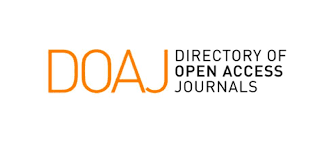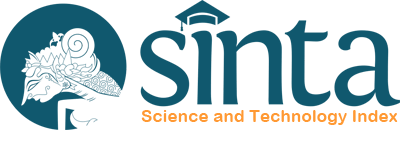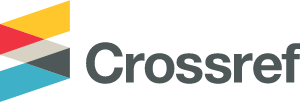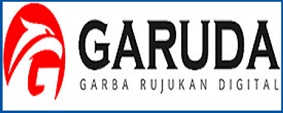Measurement of Iodine (I-131) Contamination in Staff Working in Nuclear Medicine Facilities
Abstract
The increasing use of the radiopharmaceutical Iodine-131 (I-131) in nuclear medicine services has implications for the potential for internal radiation received by workers. I-131 has high volatility so it has the potential to become an air contaminant and be inhaled by nuclear medicine staff as internal radiation exposure. This study aims to estimate I-131 contamination in staff at a nuclear medicine facility using a gamma spectrometer. Measurements of I-131 activity in the thyroid were carried out on 38 staff including medical physicists, nuclear medicine specialists, radiographers, radio-pharmacists, nurses, house attendants, and cleaners. The I-131 activity value measured in the staff's thyroid had an activity value range of 13.1 – 238.2 Bq in 13 nuclear medicine staff. Meanwhile, for 25 other medical staff, the I-131 activity values ??measured in the thyroid had activity values ??below the detection limit of the device (14.2 ± 4.3 Bq for men and 11.8 ± 3.5 Bq for women). The highest internal dose rate measured in the thyroid of Pramu Husada nuclear medicine staff and radiopharmaceuticals was 0.1-0.5 mSv/year. This value is still below the dose limit value for internal radiation.
Downloads
References
[2] Oliveira, Cassio M., Tania V. da Silva, Thessa C. Alonso1, Peterson L. Squair, Calibration of CDTN-Whole Body Counter For in-vivo Measurements of I-131, International Nuclear Atlantic Conference - INAC 2009.
[3] Amy Kopisch, Chris B. Martin and Vesper Grantham, Exposure to Technologists from Preparing and Administering Therapeutic 131I: How Frequently Should be Bioassay?, Journal of Nuclear Medicine Technology, volume 39 (1), 2011, pp. 60-66.
[4] Carneiro, Luana Gomes, Eder Augusto de Lucena, Camilla da Silva Sampaio, Ana Letícia Almeida Dantas, Wanderson Oliveira Sousa, Maristela Souza Santos, Bernardo Maranhão Dantas, Internal dosimetry of nuclear medicine workers through the analysis of 131I in aerosols, Applied Radiation and Isotopes Volume 100, June 2015, pp. 70-74.
[5] Bright, J.M, T.T Rees, L.E Baca and R.L Green, Volatility of Radiopharmacy-prepared Sodium Iodide-131 Capsules, Journal Nuclear Medicine and Technology, Volume 2(1), Maret 2020, page 52-55.
[6] International Atomic Energy Agency, IAEA. Indirect methods for assessing intakes of radionuclides causing occupational exposure. Safety Guide No18RS-G-1.2, IAEA, 2000, Safety Standard Series.
[7] ISO 16637, Radiological protection monitoring and internal dosimetry for staff members exposed to medical radionuclides as unsealed sources, 2016.
[8] Krajewska, G. & Pachoki, K.A, Assessment of Exposure of Workers to Ionizing Radiation from Radioiodine and Technetium in Nuclear Medicine Departmental Facilities, Medycyna Pracy, volume 64(5), 2013, pp. 625-630.
[9] Heravi, G.H., Garshasbi, H., Diba, J.K., & Asghari, S.K. Monitoring of iodine-125 and iodine-131 in thyroid ofindividuals in nuclear medicine centers of North West provinces of Iran. Iranian Journal of Radiation Research, volume 2(3), 2004, pp. 141-147.
[10] Liu, H., Bo, C., & Weihai, Z. A progress review on methods for in vivo measurement of 131I in thyroids by using portable gamma spectrometers. Radiation Medicine and Protection, volume 2, 2022, pp.155-159.
[11] Cember, H. and Wang, W.H, A user-friendly thyroid monitor. In Proceedings of an International Radiation Protection Association Conference, Hiroshima, Japan: IRPA-10, 2000.
[12] Brudecki, K., Kowalska, A., Zagrodzki, P., Szczodry, A., Mroz, T., Janowski, P., & Mietelski, J.W, Measurement of 131 I activity in thyroid of nuclear medical staf and internal dose assessment in a Polish nuclear medical hospital. Radiation and Environmental Biophysics, volume 56(1), 2017, pp.19-26.
[13] U.S. Nuclear Regulatory Commission. Applications of Bioassay for I-125 and I-131. Washington, D.C: U.S. Government Printing Office; 1979. Regulatory Guide 8.20.
[14] Bunawas, Iskandar, D., Wahyudi, & Wiwik. Pengukuran 1-131 di Udara Menggunakan Spektrometer Gamma Portabel. Presentasi Ilmiah Keselamalan Radiasi dan Lingkungan VIII (pp. 242- 246), 2000, Jakarta: BATAN.
[15] Arnold, D, Fundamentals of gamma spectrometry. Bonn: BMUV, 2018.
[16] Corebima, J.N. Pengembangan metode sederhana perkiraan dosis interna tiroid menggunakan phantom tiroid dan surveymeter beta-gamma, Skripsi, Universitas Brawijaya, 2022.
[17] ICRP, Dose Coefficients for Intakes of Radionuclides by Workers, ICRP Publication 68, Oxford: Pergamon, 1996.
[18] ICRP, Limits of Intakes of Radionuclides by Workers, ICRP Publication 30. Oxford: Pergamon Press, 1978.
[19] Yoshitomi H, Nishino S, Tanimura Y, Takahashi M. A study of a calibration technique for a newly developed thyroid monitor and its uncertainties due to body size for radioiodine measurements. Radiation Measurement, volume 133, 2020.
[20] Akira Yunoki, Uncertainty of Measurement in the Response Test of a Thyroid Monitor, Radiation Protection Dosimetry, 2019, pp. 1–4.
[21] Liu, G., Ye Li, HanYu Zhang, Xue Zhang, Yin Yin Liu, Xiao Qin Wu, Li Mei Niu and Rong Zhang. Thyroid dose assessment due to inhalation of I-131 for nuclear medicine worker. Frontiers in Public Health, 2021, pp. 1-13.
[22] Nathan Fleck, Jamey Weichert and LisaAnn Trembath, Measurement of Iodine-131 volatility during an evaporation process, The Journal of Nuclear Medicine, May 2008, 49 (supplement 1) 414P.










